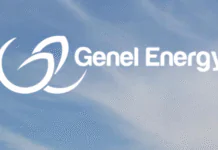Good Morning ,
EU Finalizes Roadmap for Digital Euro to Challenge US Payment Dominance
Europe takes a decisive step toward monetary independence with the launch of its digital euro roadmap.
A Bold Move in Monetary Sovereignty
EU finance ministers have finalized a roadmap for the digital euro, a central bank digital currency (CBDC) designed to reduce Europe’s reliance on US-based payment systems like Visa and Mastercard. More than a technical initiative, this is a political statement aimed at reinforcing European monetary sovereignty amid intensifying global financial competition.
The European Central Bank (ECB) is spearheading the project, positioning the digital euro as a digital counterpart to cash, fully backed by the central bank and issued alongside physical banknotes.
Key Drivers Behind the Digital Euro
- Geopolitical resilience: Recent global tensions have highlighted the EU’s dependence on foreign payment infrastructure.
- Alternatives to US systems: The digital euro provides a European solution to the dominance of Visa, Mastercard, and dollar-pegged stablecoins.
- Legislative timeline: A final decision is expected in 2026, with potential rollout as early as 2028.
- Pilot testing: Current ECB trials include offline payments and partnerships with technology providers to ensure security and usability.
How It Will Work
- Free and risk-free: Available at no cost to citizens and businesses.
- Offline privacy: Cash-like anonymity for transactions without internet access.
- Holding limits: Caps to prevent large-scale savings and protect banks from deposit flight.
- No interest: Ensures the digital euro functions strictly as a payment tool, not a store of value.
- Private sector role: Payment providers will distribute the digital euro and manage wallets, maintaining customer relationships.
Potential Impact on Europe and Beyond
- Stronger monetary sovereignty: Less dependence on foreign systems strengthens EU independence.
- More competition & innovation: A pan-European solution could accelerate payment innovation.
- Lower merchant costs: European infrastructure could reduce transaction fees versus global card networks.
- Challenges ahead: Privacy, cost, and banking sector risks remain sticking points as legislative approval moves forward.
Why This Matters
The digital euro is more than a payment innovation—it’s a strategic financial weapon in the global realignment of money and power. By challenging US dominance in payments, Europe is signaling its determination to control its own financial destiny and limit exposure to foreign influence.
This is not just politics — it’s global finance restructuring before our eyes.
@ Newshounds News™ Exclusive
Sources:
Reuters, State Street, Yahoo Finance, Capco, European Parliament, European Commission
~~~~~~~~~
Senate Democrats Urge Bipartisan Action on Digital Asset Market Regulation
Lawmakers push for urgent bipartisan cooperation to safeguard U.S. leadership in crypto and digital markets.
A Call for Cooperation on Digital Assets
U.S. Senate Democrats are pressing for swift bipartisan action on digital asset regulation, warning that America risks losing ground in the $4 trillion global crypto market without clear and coordinated rules.
In a Sept. 19 statement, lawmakers including Ruben Gallego, Mark Warner, Kirsten Gillibrand, Cory Booker, Catherine Cortez Masto, Ben Ray Luján, John Hickenlooper, Raphael Warnock, Adam Schiff, Andy Kim, Lisa Blunt Rochester, and Angela Alsobrooks urged their Republican colleagues to join in crafting a balanced regulatory framework.
Why Bipartisanship Matters
The senators emphasized that regulation at this scale can only succeed with bipartisan authorship:
“We hope our Republican colleagues will agree to a bipartisan authorship process, as is the norm for legislation of this scale… For this process to work, it must start from a place of mutual understanding.”
The message reflects an urgency to act quickly, but also a recognition that overly partisan rules could undermine both domestic innovation and global competitiveness.
Seven Key Priorities for Legislation
The framework outlined by Senate Democrats includes:
- Closing gaps in the spot market for non-security tokens
- Defining digital assets in law
- Clarifying regulatory jurisdiction
- Integrating issuers and platforms into existing oversight systems
- Strengthening anti-illicit finance controls
- Addressing corruption and abuse
- Creating fair, effective rules to support responsible blockchain growth
Critics caution that overregulation could stifle innovation, while supporters argue that regulatory clarity will boost investor protections and ensure U.S. leadership in digital finance.
Fitting Into the Global Financial Restructuring
This push is not happening in isolation. As the EU finalizes its roadmap for the digital euro and BRICS expands its own de-dollarization strategy, Washington faces pressure to maintain the dollar’s dominance in the age of tokenized money.
By moving toward a bipartisan digital asset framework, Congress is attempting to secure the U.S. position in global financial restructuring, ensuring the next phase of monetary competition happens on American terms—not just European or BRICS-led initiatives.
Why This Matters
The debate over U.S. crypto regulation is about far more than investor protection—it’s about who controls the rules of the future financial system. With rivals moving quickly on CBDCs and alternative trade settlement systems, the U.S. cannot afford gridlock.
This is not just politics — it’s global finance restructuring before our eyes.
@ Newshounds News™ Exclusive
Source: BitcoinNews
~~~~~~~~~
Real World Asset (RWA) Tokenization Could Reach $30 Trillion by 2030
Institutional adoption, regulatory clarity, and blockchain expansion drive explosive growth in tokenized assets.
From $30 Billion Today to Multi-Trillion Potential
The Real-World Asset (RWA) tokenization market has surged to $30 billion in 2025, representing 400% growth in just three years. Private credit and U.S. Treasuries dominate the market, pushing institutions like BlackRock, JPMorgan, Franklin Templeton, and Apollo to move from experimentation into scaled deployment.
Forecasts vary, but all point upward: McKinsey projects $2–4 trillion by 2030, Boston Consulting Group estimates $16 trillion, and Standard Chartered foresees as much as $30 trillion by 2034.
Market Expansion and Institutional Backing
- Private Credit (58%): $14B in tokenized loans and private market instruments.
- U.S. Treasuries (34%): $8.2B, up 539% since 2024 as tokenized bonds reshape fixed-income access.
- Other categories: Real estate (6%), commodities (3%), equities (1%), and carbon credits (1%).
BlackRock’s BUIDL fund has become the leading tokenized treasury product, now accepted as collateral on exchanges like Crypto.com and Deribit. Meanwhile, Provenance Blockchain commands a $12.5B share of the market, and Ondo Finance continues expanding its tokenized Treasury suite across multi-chain ecosystems.
The Infrastructure Behind Tokenization
- Provenance Blockchain: Leading platform for tokenized loans and regulated financial services.
- Ondo Finance: Expanding institutional-grade U.S. Treasury tokenization across XRP Ledger, Stellar, and Sei.
- Centrifuge: $1B TVL across six EVM chains, tokenizing receivables and trade finance.
- Franklin Templeton’s BENJI: $420M in tokenized money market funds across eight chains.
- MakerDAO RWA vaults: $1.8B in tokenized real-world collateral.
- Chainlink: Powering oracle infrastructure for pricing, Proof of Reserve, and cross-chain interoperability.
Industry leaders—from Larry Fink of BlackRock to Sergey Nazarov of Chainlink—describe tokenization as the “next generation of markets” and a revolutionary shift in financial infrastructure.
Why Regulation Matters
The rise of RWAs has been accelerated by regulatory clarity, especially the U.S. GENIUS Act, which opened pathways for institutional tokenization. Globally, Singapore and Hong Kong have also issued frameworks supporting tokenized securities, while partnerships like Centrifuge + Aave’s Horizon are increasing liquidity in DeFi.
By embedding RWAs into existing legal and financial systems, tokenization is bridging traditional finance (TradFi) with decentralized finance (DeFi), creating a new hybrid system that enhances liquidity, transparency, and cross-border accessibility.
Why This Matters
RWA tokenization is not just a blockchain trend—it represents the rewiring of global capital markets. By turning private credit, Treasuries, and real assets into 24/7 digital instruments, tokenization transforms liquidity, ownership, and compliance in ways that could reshape the foundations of finance itself.
As Europe moves forward with its digital euro and U.S. lawmakers debate bipartisan crypto legislation, the rise of RWAs shows how fast the world’s financial plumbing is being rebuilt.
This is not just politics — it’s global finance restructuring before our eyes.
@ Newshounds News™ Exclusive
Source: Coinpedia
~~~~~~~~~
Seeds of Wisdom Team RV Currency Facts Youtube and Rumble
Newshound’s News Telegram Room Link
Follow the Gold/Silver Rate COMEX
Follow Fast Facts
Seeds of Wisdom Team™ Website






